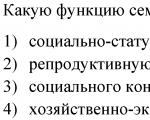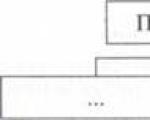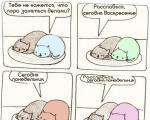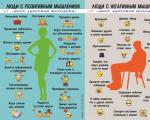Crafts on the theme of the starry sky. How to make a paper star (24 crafts)
Elena Nikitina
Children are by nature very inquisitive people. They are interested in everything, they learn about the world around them and ask a lot of questions.
One of these topics that is very interesting for children is space. Space is a mysterious world stars, planets, and other objects. Children from childhood see that the day is replaced by night. Shines in the sky during the day Sun and the moon at night. And the sky is full of stars.
Together with the children of our group, we decided that in our small but cozy group room there would be enough space for starry sky, and for planets. Creating your own Solar system - a huge job, but at the same time such an exciting and entertaining event, not only for educators, but also for children, that we simply could not refuse it. We started preparing in the summer.
Equipment and materials: 3 meters of lining fabric, 2 meters of foil paper, pushpins, balloons, balls, wallpaper paste, newspapers, napkins, threads, paints, acrylic varnish.
1. starry sky.
Making a starry sky did not cause problems for the children. This was preceded by a preliminary Job: conversations were held about space, the sky, stars, planets; examined paintings and illustrations; drew comets and the milky way, watched the sky and stars.
Progress:
1. The guys cut out stars from foil paper;
2. Spread the fabric on the floor;
3. Pinned stars on fabric.
2. solar system.
It all started with the selection of suitable size balls or balloons. We did not select absolutely exact proportions to match the sizes. planets, otherwise it would have turned out to be very voluminous balls.
The children blew up the balloons and prepared the balls.

Balls from children's toys, put and tied in a plastic bag. The balloons were inflated and tied well, so that in the process manufacturing they didn't start to deflate!

Glue the balls.

We used newspapers, paper napkins and white paper. Glued with wallpaper paste. All paper must be torn, not cut.
Soak the strips of newspaper in the prepared glue. We covered the balloons with three layers of paper. Before laying the next layer, the previous one was allowed to dry.

In summer, the glue dries very quickly at an open window.
The next step is to get balls and balls. We used a clerical knife and carefully cut the blanks into two halves without damaging the balls. At the same time, the balls were simply taken out, puncturing them.

Painting
The guys painted with gouache paints. They are easy to lay down, but washed off with water. We attach threads to the surface of the balls, which are useful for attaching to the ceiling. Before applying the next layer of paint, it is important to wait for the final drying of the previous one.
The starry sky is ready, planets of the solar system too ... Now the most important thing! We fix the canvas with stars, constellations, comets, etc. on the ceiling. planets take their place in heaven... The starry sky and the planets of the solar system are ready to be explored.


Dear Colleagues, I hope you enjoyed our Starry sky and planets of the solar systems!
Related publications:
A SPACE ROOM was created in our kindergarten. Each group presented material on a space theme. The guys and I decided.
Hello dear colleagues! I want to show you my layout "Planets of the solar system". After all, soon April 12 is the day of Cosmonautics, and the topic.
On the eve of Cosmonautics Day, I made an informative visual aid to replenish the materials of the developing environment in kindergarten.
I want to bring to your attention the model of the "Planet of the Solar System" with my own hands. Space is very big. In addition to our Earth, there are others.
In order, all the planets will be named by any of us. One is Mercury, two is Venus, three is Earth, four is Mars. Five is Jupiter, six is Saturn, seven.
We take a medium-sized hoop and wrap it with insulating tape. We cover it with a cloth of the appropriate color. We make paper balls.
We make constellations with our own hands. Constellations for children is a topic that stimulates the work of the imagination, develops imagination and the breadth of their thinking. It directs the thoughts of the kids to the distant and allows you to better understand
how our ancestors perceived the world, who gave the constellations interesting names.
In order to study and remember what they are called, you can conduct an interesting and unusual activity that will contribute to the development of oral memory and the improvement of finger dexterity.
For this you will need:
an illustrated book with images of the constellations or their photographs. It is good if each constellation is accompanied by a brief description or an entertaining story related to its discovery.
star map.

- disposable packaging from packaged goods (fruit, confectionery). They can be of different colors, most often they are yellow or white. If desired, they can be painted black or dark purple - for maximum resemblance to the night sky. If there are no such packages, you can use ordinary cardboard, sufficiently dense, or felt.
- yarn for knitting in a color contrasting with the packages. It should be thick enough, but well twisted, so that it is easier for the child to work with.
- awl.
- crochet hook or large needle.

small paper rectangles (labels) and markers.
At the beginning of the lesson, we will tell the kids that the stars have long attracted the attention of a person. They were especially interested in those who, by the nature of their activities, had to spend a lot of time under the open night sky - travelers, sailors, military men.
Becoming unwitting witnesses to the life of the night sky, these people began to notice that the combinations of stars in the sky gradually change their position, and certain stars light up earlier than others.
Convinced that these phenomena do not occur by chance, people began to trust the stars more and more, comparing the direction of their movement with them and determining the time. For convenience, certain groups of stars began to be given names, while proceeding from the fact that these combinations most closely resembled. So the constellations got their names. At the same time, there are about ninety constellations in total, and most of the names for them were invented more than four and a half thousand years ago.
Then consider, read their names and think about how they appeared. It is advisable to focus on the group of constellations that occurs in the region where the baby lives. You can tell what is conditionally divided into the northern and southern hemispheres, and each of them is characterized by its own pattern of stars.
Let's get to the practical part:
Let's place the dots inside our package in such a way as to repeat the location of the stars in the constellation. At the same time, we carefully look at the picture.
Carefully pierce the points with an awl.
We stretch a thread through the points using a hook (picking up the thread from the inside) or a needle, inserting the end of the thread into it - it turns out, as it were, an embroidered outline of the constellation.




We write the name of the constellation on the label and fix it in the corner.
Now you can find the embroidered constellation on the star map and determine in which hemisphere it can be seen.
It becomes closer when they have the opportunity to apply the acquired knowledge in their lives. A classic way to make space more accessible for children is to look at the night sky and find familiar constellations in it. To do this, you can take a night walk or just go out onto the balcony - the impressions of such a lesson will remain in the memory of the baby for a long time.
Age: from 3 years old, difficulty: easy.
Before work, it is desirable to show the child in books, on the computer the sky itself, stars, planets, rockets.
Stage 1
To begin with, we need a sheet of A3 paper, 3 circles of different sizes (pre-cut by mom) and all the pencils and felt-tip pens available in the house.
We lay out the circles on paper and start tracing. when circled - we begin to color - we did it like this. These are our planets - we have them both large and small, but the colors - at your discretion - these are magical planets.


Stage 2
We remove pencils and felt-tip pens, and we take out black and white gouache, two brushes (one for mother and one for child, take not the thickest brushes, we took No. 3), as well as one sponge for dishes and cut it in half (half for mother and half for baby ).
Now we hide our planets, under the circles and glue it with adhesive tape (with electrical tape, and with anything in two places)
we put a little black gouache in the palette (we put it right into the lid from under the gouache), we drop a small drop of water and the funniest “bang” begins (as my Nastya calls it). Sponge in gouache and "jump" with a sponge on a sheet, and of course we voice it funny (we had it - bang-bang, chmyak-chmyak, jump-jump and even qua-qua).

Stage 3
Well, they painted it, remove the black gouache and take out the white one. We add some water directly into the jar (the paint should be liquid), dip the brush, take it by the tip with one hand and hit the finger of the other hand - we get stars, both small and large - like this.

Stage 4 - decoration
So, the most favorite stage begins, we take sparkles and decorate - we make the stars shiny, although we poke glitters just like that, anywhere. (you can also use a gel with sparkles, or you can use it in jars - but then you will need cotton swabs).
We have some glitter here.

Well, you need to somehow fly to our magical planets. We make a rocket. We had the usual coloring from the Internet. Natsia painted it, cut it out and glued it. and now our work is ready.

Good luck with your work with children!
In our material you will find the most interesting space craft ideas that a child can do with his own hands for projects at school or for independent study of the Universe.
The mysterious space and everything connected with it has always fascinated both adults and children. Is there life on Mars, why do the stars glow, how to fly to the moon -. If your child likes this topic, involve him in a more detailed study of space. Will serve as a wonderful start. And so that studying your favorite topic does not turn into boredom, invite your child to make interesting crafts about space for school with their own hands.
Such do-it-yourself children's crafts about space have not only a teaching effect, but are also great for concentrating a student's attention. With their help, you will be good at playing stories from, the child will learn more about the solar system and will be able to perfectly prepare for thematic lessons at school. Just imagine the joy of a child when his craft about space at school will collect a lot of accolades!
How the solar system works: a cheat sheet for children's crafts to school on the theme of space
Tell your child how the solar system works: what planets are included in it, how far is the Earth from the Sun. Let the child gradually memorize the names of all the planets. Don't push it - it will take time.
Crafts for children on the topic "Cosmos" do it yourself


.jpg)
.jpg)
.jpg)
If nothing worked out with the foam, you can draw the planets on cardboard and place them in the same way as the foam ones, as shown in the pictures above.
.jpg)
Planets are an absolute element of any crafts about space. It is not difficult to make such planets from threads. You will find step-by-step instructions and what you need for crafts in our master class on how to do it, because the principle is the same.

.jpg)
Saturn from a Styrofoam ball and an old CD - a great idea for a small craft about space with your own hands. Main- find at least one old disk at home.

An interesting mobile made of felt planets, stars and a spaceship will become an entertaining do-it-yourself craft about space for a child, because it will take time and patience. And this mobile will be a wonderful decoration in the room. If the child is difficult to handle, let him build a similar mobile out of paper.

What about the soft solar system? It is very pleasant to hold such pom-pom planets in your hands and just carry them to school for lessons. - do not crumple and easily fit in a backpack. read the link.
.jpg)
Simulating the surface of the earth - very beautiful and simple craft. A child can make it as a craft on the theme of space, because the Earth- this is one of the planets of the solar system, or as a craft to school for Earth Day. See the master class on how to do it at the link.


Every space lover dreams of flying there one day. But while your child is still learning the basics of space exploration, offer him to make just such a rocket. And a great toy, and an incentive for a future profession!
.jpg)
.jpg)
When studying space, one simply cannot do without stars and constellations. Having made a similar craft with a child from toilet paper rolls, rubber bands and cut-out paper diagrams of the constellations, it will be more interesting to study astronomy. Pierce the black dots on the diagrams with a needle, stick on top of the black paper on the sleeve and secure with an elastic band. The child can look into the sleeve like a telescope, or illuminate the holes from the inside with a flashlight. You can download constellation charts here.

It is very simple to make crafts on the theme of space and planets with your own hands, which you can also wear on yourself. Girls will especially like this. You will need beads of different sizes and colors. If there are no beads of the desired colors, let the child not be upset, because they can always be repainted.
Now, when the child will need to do a do-it-yourself space-themed craft for school, you won’t have to rack your brains all evening about what and how to build. And here, for some reason, we are sure that these do-it-yourself crafts will captivate not only children, but also adults. Make interesting crafts with your child, watch educational cartoons, read and discover the secrets of our Universe together!



